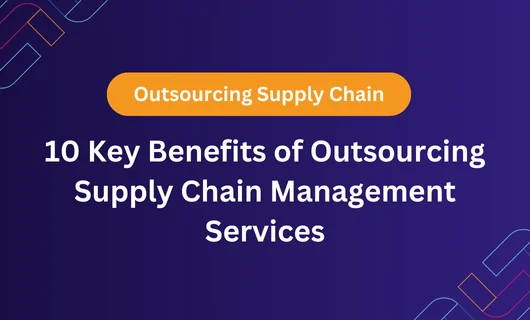Introduction: A New Frontline in Cybersecurity
In today’s hyper-connected world, cybercriminals no longer attack only big brands—they target entire ecosystems. And at the heart of those ecosystems is the supply chain. Whether you’re an e-commerce brand, a logistics provider, or a global manufacturer, your supply chain is a prime entry point for cyber threats.
Recent global disruptions have proven one thing: cybersecurity is no longer optional. It’s a necessity—especially across complex, digitally integrated supply chains.
Don’t wait for a breach. Book Your Cyber Risk Audit Now.
Why Supply Chains Are Under Attack
A supply chain includes a broad network of suppliers, partners, systems, and tools. From your raw material vendors to ERP platforms and transport software, every element is connected.
This web of digital touchpoints makes supply chains vulnerable for several reasons:
- Third-party exposure: One weak vendor can become the hacker’s backdoor into your systems.
- Legacy tech: Outdated systems with unpatched vulnerabilities are common in logistics.
- Data sharing: Massive volumes of sensitive data (pricing, inventory, customer info) are constantly exchanged.
- Cloud and IoT dependence: From warehouse sensors to inventory dashboards, more devices = more targets.
In 2023, supply chain attacks increased by 38% globally, costing businesses billions in direct losses and reputational damage.
High-Profile Examples You Should Learn From
Cyberattacks on supply chains are no longer rare—they’re routine. Consider these cases:
SolarWinds Breach (2020)
A compromised software update infected thousands of clients, including U.S. federal agencies.
Kaseya Ransomware Attack (2021)
Hackers exploited a vulnerability in Kaseya’s software to access hundreds of downstream clients—many were small businesses with limited IT security.
Maersk Attack (2017)
A NotPetya malware attack halted shipping operations worldwide, causing over $300 million in losses.
These incidents prove that cyber risk can bring global operations to a standstill—even if you aren’t the direct target.
Top Cyber Threats Facing Modern Supply Chains
Cyber threats in the supply chain are multifaceted. Here are the most dangerous ones:
1. Third-Party Attacks
Your vendors’ security is your security. If a supplier is hacked, attackers may use them to access your systems.
2. Ransomware
Ransomware can encrypt your logistics data, paralyzing operations until a ransom is paid.
3. Phishing & Social Engineering
Your team or partners might unknowingly click malicious links or fall for fake login pages.
4. IoT Vulnerabilities
Smart sensors, barcodes, and tracking devices can be exploited if not properly secured.
5. Data Leaks & Espionage
Supply chains often contain sensitive data like designs, pricing, and customer records—prime targets for hackers and competitors.
How Cyber Risks Impact Business Operations
Cyberattacks don’t just damage IT systems—they disrupt your entire business. Here’s how:
- Operational downtime
Production, shipping, and customer service halt until systems are restored. - Financial loss
Costs include ransom payments, regulatory fines, legal fees, and lost sales. - Broken trust
Customers and partners may lose confidence in your brand. - Compliance issues
Breaches can violate GDPR, HIPAA, or industry-specific data laws.
Risk is not just digital—it’s reputational and financial.
How to Spot Cyber Vulnerabilities in Your Supply Chain
Wondering if your business is at risk? Start with these questions:
- Do you evaluate your vendors’ cybersecurity standards?
- Are your warehouse systems and transport apps secured and monitored?
- Do you have a disaster recovery and backup plan?
- Is your team trained to identify phishing attacks?
- Are your data flows and integrations encrypted?
If you answered “no” to even one, your business may already be exposed.
🛡️ Book a Cyber Risk Audit to get a detailed health check of your digital infrastructure.
The Role of a Cyber Risk Audit
A cyber risk audit is not just an IT checklist—it’s a comprehensive analysis of your entire supply chain network. Here’s what it typically includes:
- Vendor Risk Assessment
Evaluates security measures taken by all third-party partners. - System Vulnerability Scan
Identifies weaknesses in internal and cloud-based platforms. - Compliance Gap Analysis
Checks for violations of industry standards or data regulations. - Incident Response Readiness
Assesses your ability to detect, respond, and recover from an attack. - Customized Risk Report
Actionable insights tailored to your business and supply chain.
This isn’t just about ticking boxes. It’s about protecting your operations, brand, and bottom line.
Proactive Steps to Mitigate Cyber Risk Today
Don’t wait for a breach to take action. Start with these best practices:
- Vet every vendor: Require security certifications like ISO 27001 or SOC 2.
- Segment your networks: Don’t let one infected device access your entire system.
- Encrypt your data: Use end-to-end encryption for internal and external communications.
- Invest in employee training: Your team is your first line of defense.
- Conduct regular audits: Assess and update your cyber strategy every 6–12 months.
Final Thoughts: Don’t Let Cyber Risk Disrupt Your Supply Chain
Digital transformation has made supply chains faster, smarter—and more vulnerable. With every partner, platform, and endpoint you add, your cyber exposure grows.
Cybercriminals are counting on businesses to overlook these risks. Don’t be one of them.
Protect your business today. Book Your Cyber Risk Audit and stay ahead of threats before they strike.





